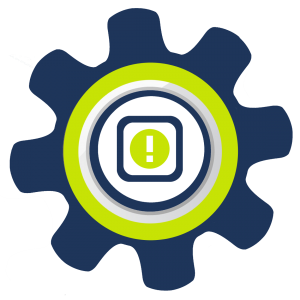
Focus Area 7: At-Risk Behaviors
Introduction

Risk-taking is a natural part of growing up and a necessary element of healthy youth development. Youth often have a difficult time thinking about the long-term consequences their current behavior may create. And the adolescent brain doesn’t yet have a strong ability to think twice before acting.
Teenagers, in particular, often have a tendency to see themselves as invincible; they know some behaviors have high risk and potentially bad consequences but typically their perspective is “that won’t happen to me.”
Learning to recognize the difference between normal, healthy risk-taking and potentially harmful, unhealthy risk-taking is a critical skill in your role as a youth worker. Perhaps even more important is developing the confidence to comfortably talk with youth about any unhealthy risk-taking you observe.
It’s not an easy task. You may sometimes find yourself in a bit of a bind because you appreciate the need for youth to test their limits and most of your work is all about giving them the proper space and support to do that. There’s a trust that’s been built between you and the youth. You may feel reluctant to address unhealthy risk-taking for fear of breaking that bond.
And because all of us have taken risks and survived, our own experience could cause us to have a perspective that “they’ll be fine” when we see youth taking some unhealthy risks.
Yes, risk-taking is a normal part of a youth’s development. But clearly not all risk-taking is healthy. Research tells us that there are warning signs you can learn to recognize. And there are certain patterns of behavior that point to the possibility of a higher risk for negative consequences.
Studies show that early intervention works in helping youth make more positive decisions and avoid unhealthy risk-taking. And that’s where you come in. So, this focus area is all about what risk-taking behaviors you need to be concerned about. You’ll also learn ways to effectively address those behaviors with youth.
Remember that you are not solely responsible for preventing unhealthy behaviors or intervening once any troubling behaviors start. You are part of a team and you play an important role but you aren’t expected to do it on your own.
Learning Tip

Risk-taking behavior is a natural part of growing up. Because we all do it, it’s expected in a way. And that can actually complicate the decision you’ll need to make about whether or not to intervene in any given situation. There is an art to finding the right balance. The learning in this module is meant to help you develop that balance.
Your ability to recognize healthy vs unhealthy risk-taking behaviors is critical to being able to give the right guidance to the youth you serve. You’ll be helping them achieve their developmental milestones in a positive way.
As you’ll see from the learning objectives for this module, not only is it critical to know how to tell the difference between healthy and unhealthy risk, you also need to build up your ability to consult with others regarding how to address risk-taking behaviors.
And you’ll need to hone your communication skills for talking with youth about unhealthy behaviors. This is an area where your commitment to continued learning will serve you well.
Let these objectives guide your learning as you go through each section. And remember, the quiz at the end is based on these key insights.
Learning Objectives Preview

- Understand what drives risk-taking behavior
- Recognize the warning signs of unhealthy risk-taking behaviors
- Learn effective communication strategies for talking with young people about unhealthy risk-taking behaviors
- Know your role as a youth worker and the importance of consulting with your supervisor
If you prefer to print this section of The Art & Science of Youth Work certificate course, click on the "Print Friendly" icon to select how you would like it to print. You can remove images and icons.
